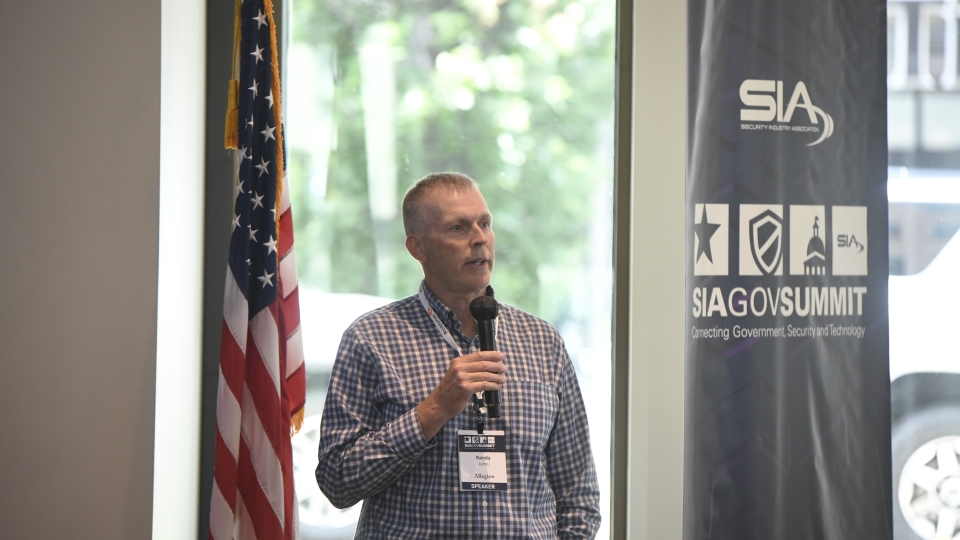Common School Security Challenges and How Schools Can Obtain Outside Grant Funding

At SIA GovSummit, Allegion’s Christin Kinman and Randy Jump discussed how teams can work together to protect schools and obtain grant funds for school security projects.
At the 2024 SIA GovSummit, a 2-day government security conference presented by the Security Industry Association and held in Washington, D.C., May 21-22, Allegion’s Christin Kinman and Randy Jump shared tips on how to approach, solve and fund school security challenges. They did so by highlighting a case study in which a school developed a comprehensive, systems-based strategy for physical security improvements, partnered with industry and secured outside grant funding to support the project – and their insights.
Common School Security Challenges and Needs
According to Kinman and Jump, many schools face common challenges when it comes to improving their security. Among those commonalities is that the schools are often asset rich and cash poor. It’s common also for the schools to have some funding available, but many schools will look back and recognize they have not spent that funding in a systematic, coordinated way to impact the school system.
Kinman highlighted that industry professionals and school officials can help schools address these types of recurring challenges by providing education on planning for security, offering technical expertise on appropriate applications for hardware and providing evidence-based solutions that can relieve schools’ pressure to act or “just do something.” Kinman said this means investments will be rooted in evidence and not fear, and she said it’s an opportunity to simultaneously advise on code/life safety/accessibility requirements, provide a systematic approach to planning for security and assist schools in finding funding to cover security improvement costs.

How to Approach School Security Challenges
A comprehensive school security program, according to Kinman and Jump, includes an integrated system that works together to maximize return, with physical security beginning at the perimeter and working inward, and multiple layers of safety and security measures before reaching the interior of the school or building. Measures should work together to 1) deter, or prevent attacks or threats from happening, 2) detect the presence of a threat, 3) delay, or slow down, an attack or increase the level of effort needed to allow an incident to occur and 4) deny, or prevent or restrict access to valued assets.
“It takes a supplier/installer, manufacturer and integrator working together to provide an end user the best solution and experience,” said Kinman.
In the case study that Kinman and Jump shared, the school had been targeted by graffiti and demonstrators, parents and staff were concerned about safety, school leadership had no formal training on planning for security and there were no funding mechanisms. By working with industry partners, the school was able to build a team; complete a comprehensive site assessment that identified needs, wants and functional requirements, created scope of work and budgetary pricing and created prioritization and low-cost/high-return projects; identify all possible funding sources; and implement a strategy that secured the perimeter and implemented a unified system with one-touch lockdown and electronic locks on every classroom door.

Identifying and Securing Funding Opportunities for School Security
“There’s money out there, but how do you get it?”, said Kinman at the GovSummit session, reflecting a common concern for school administrators.
She explained that grants for school security are generally outcomes-based and follow the same general form:
- Notification of funding availability or opportunity, which identifies the problem
- Parameters to solve the problem
- Response or narrative summary
- Budget
- Schedule/timeline
- Reporting requirements
Kinman shared that most applications for security funding ask for target hardening in the form of upgraded doors or windows, security cameras, access control, window film, intrusion detection or training and emphasized that the most successful applications:
- Convey the best stories and/or create the most cohesive narrative
- Fully explain the problem to be solved, the evaluation process for targeting the specific problem, the process for choosing the solution, the intended outcome and how the solution will get to that outcome
- Tie into the programmatic goals of the grant
- Highlight the impact, or how the project will affect the community at large beyond the immediate user groups
Reviewers look at factors including the population size and the percentage of people who will be impacted by a security improvement project, whether the improvement affects multiple community groups, whether the approach to planning is a collaborative one, whether community leaders are supportive, how sustainable the improvement is once the grant money is gone, what funding is available toward the improvement and how innovative the project is. Kinman also encouraged applicants to be as specific as possible and use numbers to quantify aspects of the proposals (e.g., “Our district has 16,000 students, and this improvement will affect 12,000 students, or 75% of our population”).
Kinman also highlighted federal funding opportunities through the School Violence Prevention Program, which is administered by the U.S. Department of Justice and is open to any public school district, offering a maximum of $500,000 for physical security improvements (including a 25% cash match, which can be waived if financial hardship exceptions are met), with a 36-month period of performance.
The presentation closed with tips for removing barriers to security planning and funding:
- Understand an apply a systems-based approach to planning for security, which considers the life cycle of planning and the role each team member has to ensure code-compliant, integrated solutions
- Understand and connect end users with grant experts to identify funding streams
- Build trust and leverage relationships to give end users a streamlined process

More Guidance and Training on School Security Grants
SIA provides its members access to a comprehensive guide to school security funding grant programs in the United States. The SIA Guide to School Security Funding is updated once a year, following major changes in federal and state school security grants programs. The SIA Guide to School Security Funding covers programs like the School Violence Prevention Program and many other funding sources that schools may use.
SIA also provides an online, on-demand grants training course. GrantED: SIA’s Comprehensive Security Grants Training Course covers many grant programs – not just school security grants – and also provides guidance on how to successfully apply for grant funding. The course is designed to be applicable for security practitioners and integrators, manufacturers, security consultants and others who are working with security practitioners on projects that that may require security grants.
